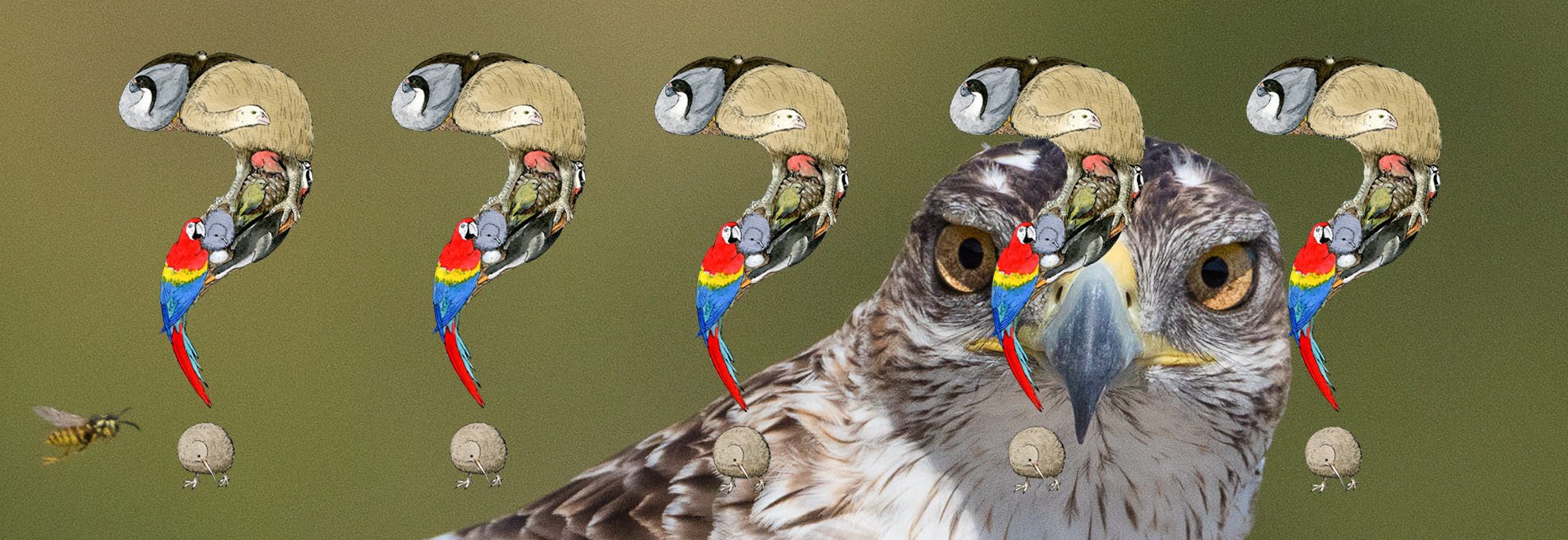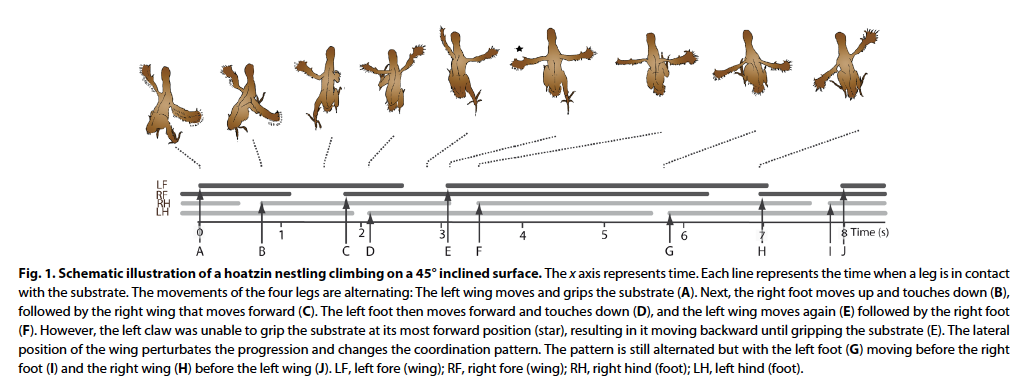 Photo: Sebastià Torrens. Question Marks: Aina Bonner
Photo: Sebastià Torrens. Question Marks: Aina Bonner
Solution to Challenge 4
There are several answers to this Challenge
(1) One answer the hoatzin (Opisthocomus hoazin). The hoatzin is a very singular species. It is the only representative of a lineage of birds that split from its closest relatives more than 60 million years ago. It is the only living bird that has wings with functional claws.
There are species of birds today that have vestigial, non-functional, wing claws. Archeopteryx and other extinct birds also had functional wing claws. In the case of Archaeopteryx, some wing claws were larger than some of the pedal claws. They had to be functional, but their exact function is unknown.
Locomotion of the hoatzin using wings and hindlegs is limited to a juvenile phase of the animal’s life, when it uses its wings (with claws that will fall off in adults) along with its legs to move around by the branches of the trees or to climb the trunks.

Adult hoatzin specimen (Murray Foubister via Wikipedia Commons) [From: https://insidescience.org/news/baby-birds-use-wing-claws-climb-through-amazon]

From: Abourachid et al 2019. Science Advances, 5: eaat0787
Don’t miss the video:
https://insidescience.org/news/baby-birds-use-wing-claws-climb-through-amazon]
(2) Another answer is that there are a number of birds that when they take flight must first run on the ground while they begin to beat their wings to start to fly. During this (short) take-off phase they simultaneously use their wings and legs to move. These are generally heavy land (and marine) birds. This answer is fine, although the duration of the simultaneous use of both locomotive modules is very short, since the movement itself is done by running or flying.
See the video sent to me by Joan Femenías:
Albatros: https://teara.govt.nz/en/video/7069/albatross-taking-off
3) A third answer contemplates that in experiments on the origin of flight, inclined ramps have been used by which a partridge (or other birds) was made to climb, and, depending on the inclination the ramp made, it was observed that the partridges walked, but were simultaneously helped by the momentum of their wings to climb. It is also a correct answer, although it is something that, as far as I know, has basically been done experimentally. Under natural conditions, some chicks that have fallen from the nest and cannot yet fly can do this.
You will find some examples in the following video sent by Joan Femenías:
(Eudromia elegans), (Alectura lathami), (Alectoris chukar), (Columba livia), (Pica hudsonia), (Catharus guttatus): https://www.youtube.com/watch?v=e81J915TEXg
(4) Finally, another answer, perhaps the most imaginative, is the one that contemplates the penguins when they move belly up on the ground (that is, on a solid substrate, as requested in the Challenge) through the ice fields of the Antarctica, since they move together using the help of their legs and – eventually – that of their wings.
Gràcies a tots els que heu participat!
References
Abourachid, A., Herrel, A., Decamps, T., Pages, F., Fabre, A.M., van Hoorebeke, L., Adriaiens, D. i Garcia Amado, M.A. 2019. Hoatzin nestling locomotion: acquisition of quadrupedal limb coordination in birds. Science Advances, 5, 5: eaat0787.
Dial, K.P. 2003. Wing-Assisted Incline Running and the Evolution of Flight. Science 299, 402-404.
Rogers, N. 2019. The Baby Birds That Use Wing-Claws to Climb Through the Amazon. Inside Science (bloc). [ https://insidescience.org/news/baby-birds-use-wing-claws-climb-through-amazon]
